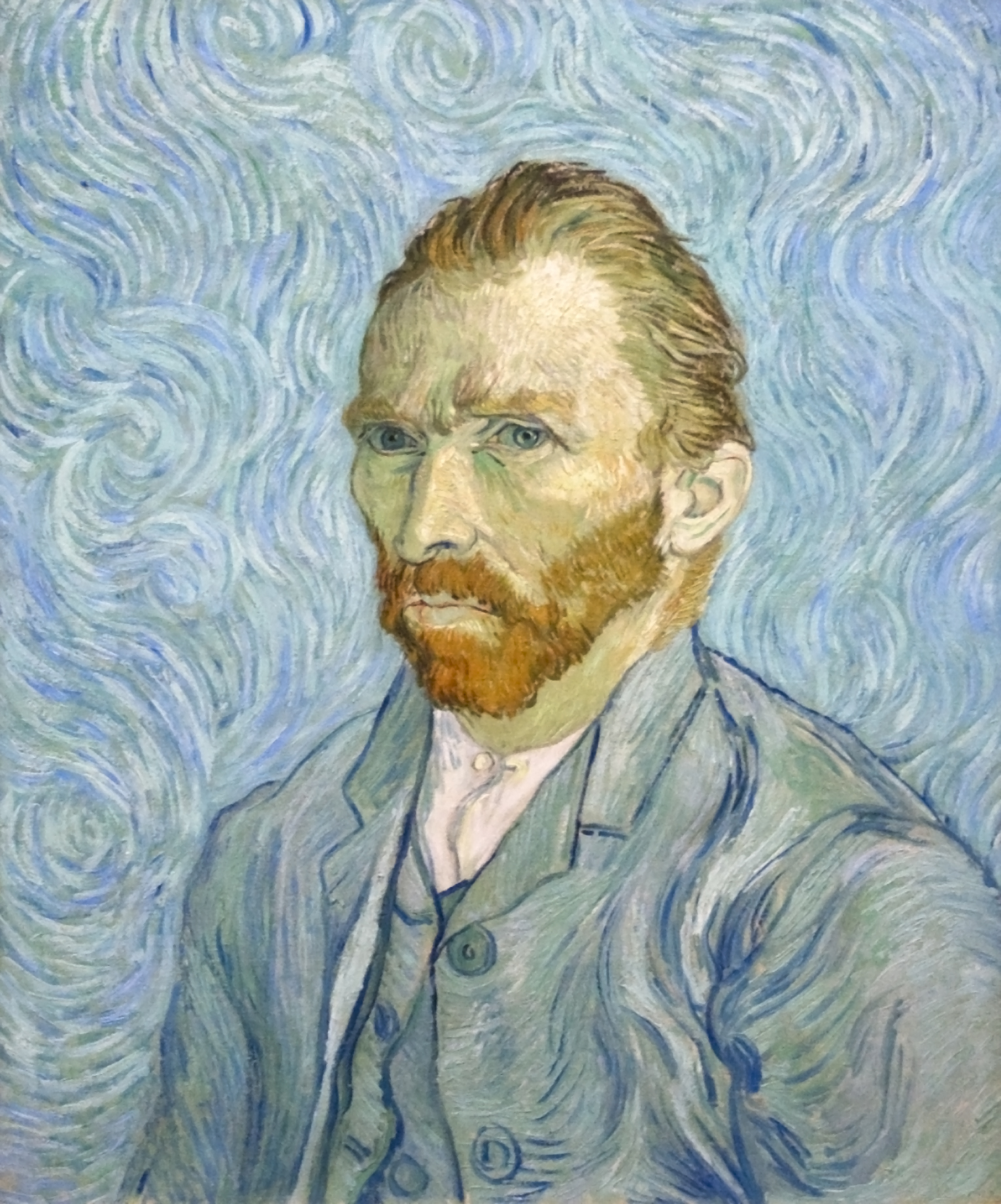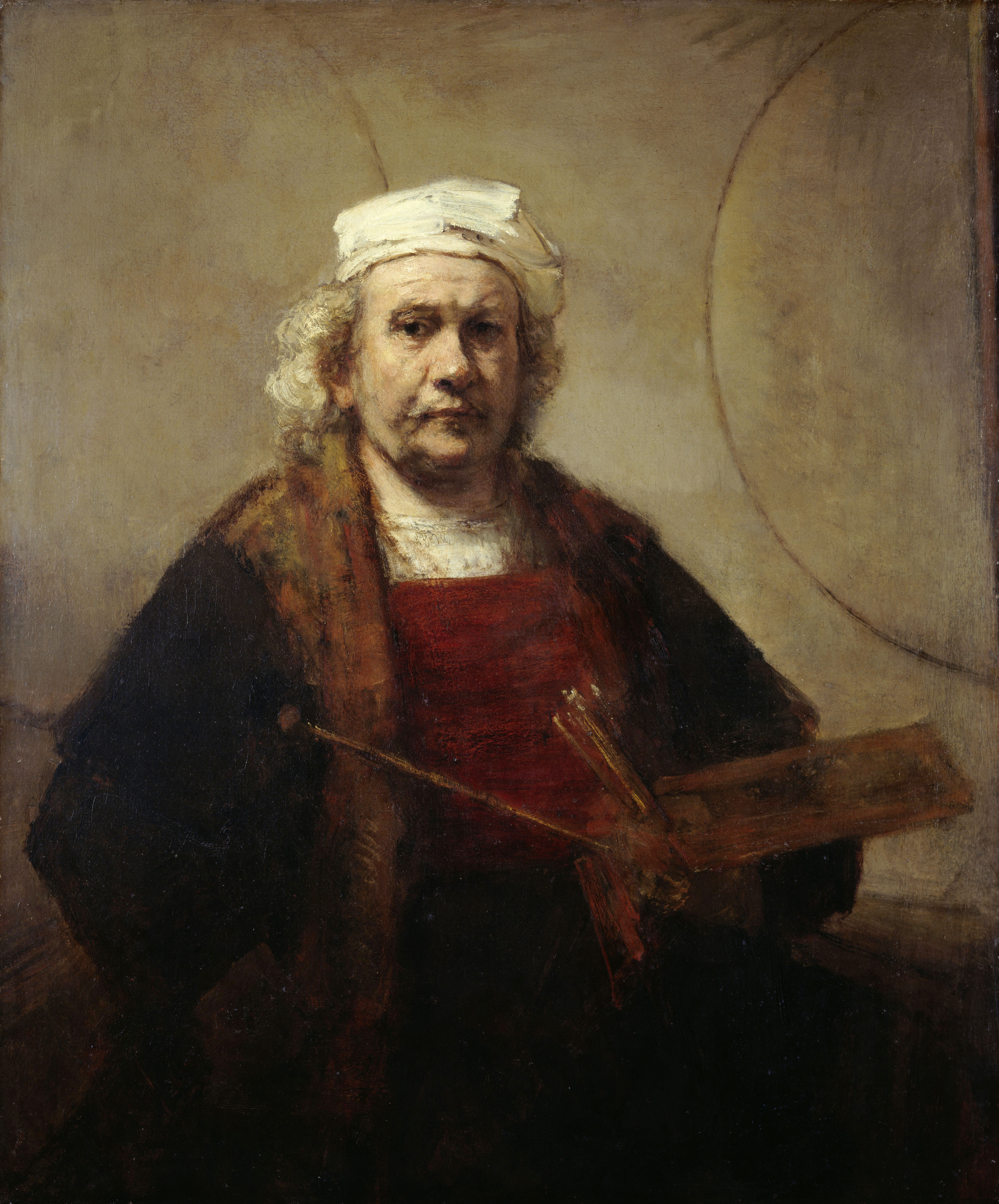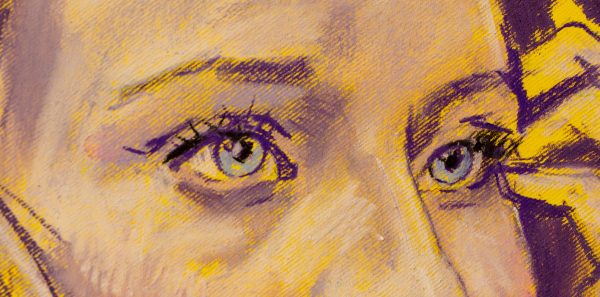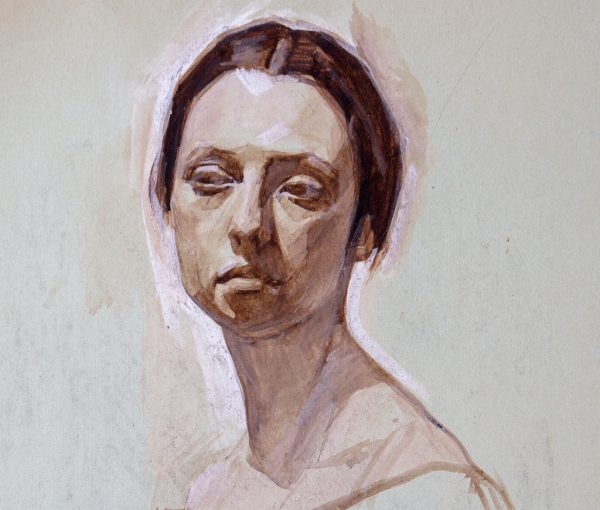
How to do a self portrait: the bravest form of art?
You may be intimately acquainted with your face. But that doesn’t mean you know how to do a self portrait. In fact, mastering the art of self-portraiture can be a lifetime’s work in itself.
Self-portraits offer an intriguing paradox. Most of us have painted them. After all, it’s easier to reach for the mirror than to cajole someone into an extended sitting. Yet, the image we see is always in reverse, and our own ideas and preconceptions of our self may get in the way of a great painting.
When painting a self portrait, should you paint the face that you feel the world sees or try to capture the depths of yourself that often stay hidden? Is your self portrait purely an exercise or will it form part of your collection? If there is interest, would you sell it or would it feel too personal? All of these questions make the self-portrait a highly challenging painting to realize.
It is important with self-portraits to separate the challenging or imperfect first self-portrait from the ultimate painting. Even if you are immensely proud of your debut effort, consider how else you can interpret your face. If you favor drawing from a mirror, remember the image is reversed. This means your self portrait will resemble your own self-perception. But to others it may be slightly startling, as no face is perfectly symmetrical.

Why paint a self portrait?
From a practical standpoint, you are your most accessible model. That may be one reason why self portraits are so prevalent, but it’s not the only one.
A self portrait is also technically challenging. It’s a key milestone in an artist’s journey to mastering their craft. First, it requires the artist to break down something so familiar and intimate into its most basic parts (eyes, nose, mouth), and from there, to create a compelling and psychological complex work of art.
Second, most of us prefer to draw from life, but a self-portrait requires us to change focus from mirror to canvas. That means we never have a static model. As a result, we may find the limitations on movement restrict our painting technique. Conversely, it may also influence a more loose style. That very unexpected quality of the self-portrait is one of the reasons it’s such an important and ongoing part of an artist’s training and evolution.
Finally, there is the psychological challenge of the self-portrait. It isn’t easy to look yourself in the eye and say “Here I am” in a bold flurry of paint. “This is me in my most naked state.”
What makes a great self-portrait?
The simple answer is honesty. Consider how we draw or paint a stranger. We break the face down to its shapes, textures and expression. But not knowing the person can create a distance that evaporates when you capture someone you know intimately: yourself.
To begin, take instruction from the great artists who made exploring their own visage a cornerstone of their life’s work.

Rembrandt: the prolific and lively self-portraits
Rembrandt painted so many self-portraits that we feel we know him, even at the distance of four hundred years. In fact, there are whole books devoted to the roughly 100 paintings and sketches of himself. They display his physical likeness as well as an immense sense of spirit. We see the artist age and change over time, and he uses his own face to express humor, melancholy, pride and the deterioration of age. Further, his self-portraits range from etchings to oil paintings, with the medium and style of brushwork reinforcing the narrative he tells of this human being.
The National Portrait Gallery has a fascinating film on the importance of his self portraits.
Van Gogh: the self portrait as exploration of a soul
Vincent van Gogh painted 36 very distinct representations of his face (and soul). As we look at that famous almost-smile of the Mona Lisa and wonder what amuses her, we look at van Gogh and search for signs of his state of mind.
Kahlo: symbolism and brutal honesty
Of Frida Kahlo’s 143 paintings, fully 55 were self-portraits. In fact, it’s her distinctive style, coupled with her signature upswept hairdo and exaggerated eyebrows, that make hers one of the most recognized (and reproduced) faces of any artist in history. You may want to play with media, or add symbolic objects that resonate with your culture or personal history, as she did so effectively.
Picasso: eight decades of self portraiture
Pablo Picasso began his career with a portrait on 1901. Fast forward to 1972 and Picasso, aged 90, created one of his last paintings, a self-portrait that seems to express his confusion through use of his powerful art practice. He drew and painted himself from the age of 15 and many are seen as his most important works.

Eight tips to create the perfect self portrait
Any accomplished artist knows that you need to observe things before you can paint or draw them. The hardest part of a self-portrait is really looking at yourself. Most of us may glance in the mirror while brushing our teeth, or check our outfit before leaving the house, but we rarely focus on our faces. Even a person wearing make-up may isolate their features individually, rather than examining their whole face. Follow these tips to move beyond the cursory glance in the mirror to a deep familiarity with the lines and shapes of your features.
#1: Feel Your Face
Use your fingertips to examine the planes and shapes of your face. You might feel silly, but to create a self-portrait you need to relearn what your face looks like.
#2: Use Multiple Mirrors
Get sketching. You may normally look directly at mirrors, so you’ll be mostly familiar with a single straight on view. But set up two or three mirrors so you can see what you look like when you are not looking at yourself. You can use photography here, but sketching from real life will always be more, well, real.
#3: Make Faces
Smile, frown, purse your lips and laugh. Move your head around. It’s unlikely you want to strike a pose in a self-portrait, but it can be a good exercise to relax. Quick sketches of exaggerated facial expressions can help you relearn what your face looks like.
#4: Experiment with Time-Lapse Photography
Consider using a time-lapse camera to collect a number of different faces. To capture your true likeness, you’ll want natural facial expressions, rather than anything posed or contrived.
#5: Explore your face in varied lighting
Change the light, try harsh lighting, go soft. You will probably find, as photographer’s do, that a flat natural light works best. But it depends on your style. Harsh exaggerated shadows may suit excessive color contrasts.
#6: Change Posture
Few faces are captured straight on, passport photo-style. Turn or tilt your head, even slightly, to create expression in your posture as well as your face. Even a quick look at portraits will show painters as a group share a favored angle for self-portraiture. Sitting at a 45 degree angle and turning the face towards the viewer may feel a little clichéd, but it works. Master this tried-and-true method, at least until you feel comfortable enough to test new postures.
#7: Stick to your own style
If your work is semi-representational, or even abstracted, don’t copy the likes of Lucien Freud because you think that’s what a self-portrait looks like. Your work is a self portrait, but your unique style is as much a part of your selfie as what it depicts. The work should resonate with your medium.
#8: Don’t embellish or exaggerate
It can be tempting to embellish your own face, to hide the crinkle of crow’s feet or soften dark areas. Before you start, make a decision to present exactly what you see. Likewise, don’t highlight flaws or emphasize features that you find less becoming. Be real and honest.
Don’t let the portrait be a revelation of (low) self-esteem. Instead, see it as a study. In time, your portraits may develop into pieces that address the theme of self-perception, but before you tackle anything in such a vein, it is vital that you can paint or draw yourself with startling physical accuracy.

How to draw your face: a step by step guide
Before you paint a self-portrait, study the shape and form, and try to distance yourself from the reality of the face before you.
Isolate your features – look at what makes up your face. There are proportions to consider: the bridge of your nose is actually the middle of your face.
We have Leonardo da Vinci and his Vitruvian Man to thank for these general rules of proportion (Your foot will also fits between the wrist and elbow, for those who like proportioning).
If you favor Chuck Close-style realism, you may want to map out your face with a soft tape measure and transfer it onto a grid.
But accuracy isn’t everything. Children tend to break the face up into thirds with the eyes sitting in the first third, nose in the second and mouth in the last one. Picasso, also followed this style with many of his later works, but, hey, he was Picasso.
Remember to sketch your full head. When presented with a person, the temptation is to draw or paint straight on. But don’t. This is not an identity card photograph.

Paint your head
Portraits are about the face. But the head is the frame, so it’s vital to get it right. Consider the neck, side view, ears and top of the head. Leaning the head back gives a clear view of underneath the chin and the nose. You’ll discover the neck and chin consume a huge expanse of space. Examine your nostrils and the underside of the nose. Then look downwards. That perspective gives the hair a dominant view, the eyes disappear, and the brows come into full relief.
Face shape
We talk about oval, square, round and heart shaped faces, but faces come in as many shapes as people do. Features should be sketched from as many angles as possible. Notice the difference in the eyes when straight on, versus looking down or in profile.
Eyes and mouth are often the first things we notice on a face, but every feature matters. The nose can be a tricky one, but only if you try to paint the face straight on. Noses don’t have much expression, so for most of us it’s about getting the shape and shading right. Getting it wrong can quickly turn your nose monstrous.
Painting the mouth
Our most expressive feature, the mouth has many possibilities and can reflect many moods. Try drawing from slightly above and slightly below in a relaxed pose to get the full shape.
Painting the eyes
Usually the gaze is upon the viewer, but interesting results can come from side glances and downwards gazes. Downwards views will show the shape of the eye and the curve of the brow and lashes. On the other hand, looking upwards affords an opportunity to express the color and shade. Painting the eyes in a direct view can be very unforgiving, and can look blank until you relax into it.
Painting the ears
The ears are pretty static, but their size and shape can be replicated from any angle with a little practice. Look at folds on material painted by Renaissance painters to get an idea of capturing all your ear’s folds and gulleys.
Can you sell a self-portrait?
Some of history’s best artists created self portraits that rank among their most famous (and valuable) works.
Self portraits often stand out from portraits of other people. They reveal more, there seems less distance between the canvas and the person, and the honesty is acute. Those qualities make for powerful and saleable work.

One of Mexican painter Frida Kahlo’s final self-portraits Diego y yo (Diego and I) broke several art market records when it sold for $34.9 million in November 2021. Other valuable self portraits include Vincent van Gogh, who painted himself 35 times. An exhibition at UK’s Courtauld Gallery in 2022 was devoted entirely to his self-portraits with Self–Portrait with Bandaged Ear one if its gems.
Embrace the self-portrait as a career milestone
Having the technical ability, artistic sensitivity and creative honesty to produce a decent self-portrait is a landmark moment in any artist’s career. While you’re unlikely to create a masterpiece on your first attempt, it’s a great exercise and will fuel your growth as an artist.
As the Irish writer James Joyce once remarked to a portraitist who said he was trying to capture the author’s soul: “Never you mind my soul, is my tie straight?”
Ready to move on to the rest of the body? Explore the history of the human body in art
